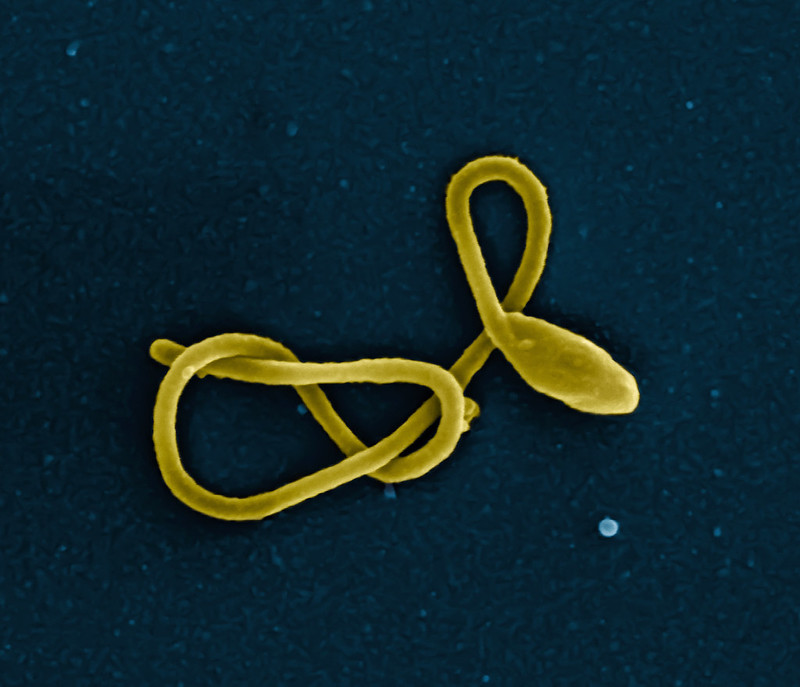Photo courtesy of NIAID.
Uganda declared an outbreak of Ebola on Tuesday, September 20 after a case of the Sudan ebolavirus strain was confirmed in the central Mubende district (1,2,3). The virus was detected in a 24-year-old male who presented with a high fever, diarrhea, abdominal pain, and vomiting blood and was initially treated for malaria before dying from his illness (3). This case is Uganda’s first death from Ebola since 2019, when an outbreak of Zaire ebolavirus resulted in 5 deaths (1). It also marks the first time in over a decade that the relatively rare Sudan ebolavirus has been recorded in Uganda (1,3).
According to the Ugandan Ministry of Health, as of September 23, there has been 11 confirmed cases and 11 deaths (4 confirmed and 7 highly probable). 25 people are currently receiving treatment in a health facility, of which 6 have already been confirmed as Ebola cases and 19 are suspected cases, exhibiting severe Ebola symptoms (4). Ugandan health authorities and the World Health Organization (WHO) are working quickly to respond to the outbreak by increasing surveillance and implementing infection prevention and control initiatives (2,5). Authorities have identified at least 58 contacts of confirmed cases thus far (4).
The index case for this outbreak is currently unknown (3), but outbreaks of Ebola typically start when a person encounters an infected animal, such as a fruit bat or a non-human primate; the virus later spreads from person to person through direct contact with blood or other bodily secretions or materials contaminated with those fluids (6). Since its discovery in 1976, ebolavirus has caused many large outbreaks (2). Three of the six ebolavirus strains are responsible for all outbreaks involving humans: Bundibugyo, Sudan and Zaire (2). According to the WHO, there has been a total of 7 outbreaks involving Sudan ebolavirus, 4 in Uganda and 3 in Sudan (2). Although the Sudan ebolavirus is typically less transmissible compared to the Zaire ebolavirus (3), the case fatality rate for the Sudan strain can range anywhere from 41-100% (2).
A major concern at the moment is whether the Ervebo (rVSV-ZEBOV) vaccine, which was approved by the U.S. Food and Drug Administration in December 2020 and has proven effective in controlling outbreaks of Zaire ebolavirus, will also protect against the Sudan strain (2,7). There are six candidate vaccines specifically designed for Sudan ebolavirus in various stages of development; three have Phase 1 data, meaning that they could potentially be applied in a ring vaccination trial in response to this outbreak if sufficient doses exist (8). Without a vaccination campaign as part of the outbreak strategy, prompt identification, isolation, and treatment of cases will be crucial (5). Additionally, officials have expressed apprehension at the possibility of cross border transmission as the Mubende district in Uganda contains a major highway linking the capital of Uganda to the Democratic Republic of the Congo, a country which just recently declared an end to its 14th Ebola outbreak (3,5,6).
Official case counts and reported deaths are continuously being updated in this new outbreak. You can keep informed on information relating to the current outbreak as well as all past and future Ebola outbreaks by following the Ebola Outbreaks Timeline: https://www.healthmap.org/ebola/#timeline.
References:
- https://promedmail.org/promed-post/?id=20220920.8705697
- https://www.afro.who.int/countries/uganda/news/uganda-declares-ebola-virus-disease-outbreak
- https://www.reuters.com/world/africa/uganda-ebola-cases-stand-seven-so-far-2022-09-22/
- https://twitter.com/MinofHealthUG/status/1573309205230096385
- https://news.un.org/en/story/2022/09/1127461
- https://www.bloomberg.com/news/articles/2022-09-22/who-sees-risk-of-ebola-spread-in-uganda-as-seven-cases-confirmed
- https://www.who.int/health-topics/ebola#tab=tab_1
- http://outbreaknewstoday.com/uganda-ebola-outbreak-rises-to-7-cases-37417/


